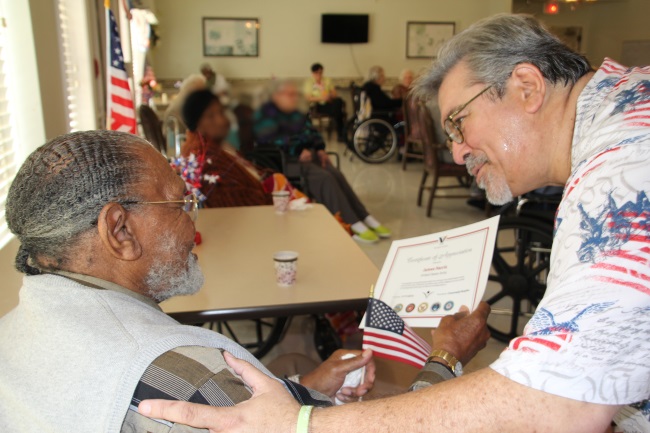Spiritual Care is a Team Effort

Great hospice care requires excellent teamwork. Hospice exemplifies transdisciplinary care — a team approach wherein individual members have their own specialty. With this type of care, all members receive sufficient training from the other disciplines that enables them to recognize, to assess and to respond to needs across discipline lines. For example, addressing pain falls within the nurse’s discipline, yet all hospice team members can recognize and assess pain and then make the proper referral. The same holds true for spiritual care.
On the hospice team, the chaplain is the spiritual care specialist. However, all team members share responsibility for spiritual care. This type of care always begins with relational spiritual care. Hospice team members form nurturing relationships with their patients and families based on care, concern, commitment and professional boundaries. Such relationships contribute to the spiritual well-being of the patient. This is relational spiritual care.
Intentional Spiritual Care
Intentional spiritual care is different. Though it begins with relational spiritual care, it goes beyond caring relationships alone to include therapeutic interventions. Prayer, for example, when done properly, can provide healing to a person’s spirit by restoring hope, by giving reassurance and encouragement, by fostering forgiveness and by establishing or reinforcing meaning and purpose.
When done improperly, prayer can be a spiritually abusive imposition that induces guilt and fear and can be patronizing and disempowering. For some, it can be meaningless and without purpose. Many well-meaning non-chaplain staff who pray with patients come from faith traditions that don’t recognize the ethical boundaries between religious evangelism and professional scope of practice.
Spiritual Practices and Rituals
The same holds true for other spiritual interventions like reading scripture, singing sacred songs or performing religious rituals. Spiritual care, when done improperly, can result in spiritual harm.
In order to avoid this, professional chaplains undergo rigorous training and extensive vetting to ensure proper spiritual care is provided for all people regardless of faith tradition or lack thereof.
But for a chaplain to tell other hospice team members — many of whom feel “called” to this work — that they cannot pray or sing hymns with a patient or that they should pray with a patient who requests it would be a sure way for that chaplain to lose acceptance and respect on the team.
Spiritual History Tools for Hospice Professionals
A non-chaplain team member, however, can provide intentional spiritual care, but it requires using a spiritual history tool, which is a short, easy-to-remember, patient-centered tool that obtains appropriate information relevant to the patient’s spiritual beliefs and practices.
There are many such tools available in the literature including FICA, FAITH, SPIRIT, HOPE and CSI-MEMO. The tool discussed here goes by the acronym, FACT, which stands for the following:
- F – Faith (and/or Beliefs, Spiritual Practices)
- A – Active (and/or Availability, Accessibility, Applicability)
- C – Coping (and/or Comfort); Conflict (and/or Concern)
- T – Treatment Plan
Learning to use this tool effectively guarantees that all members of the hospice team will be able to provide intentional spiritual care if, and when, needed or requested and that the care provided will be patient-centered and will contribute to the patient’s healing. Taking a spiritual history as the first part of intentional spiritual care protects the ethical boundaries between personal religion and professional practice. Our next blog will explore how and when to use the FACT spiritual history tool.
Mark LaRocca-Pitts
Crossroads Hospice
Chaplain
If you found this information helpful, please share it with your network and community.
Copyright © 2016 Crossroads Hospice. All rights reserved.




